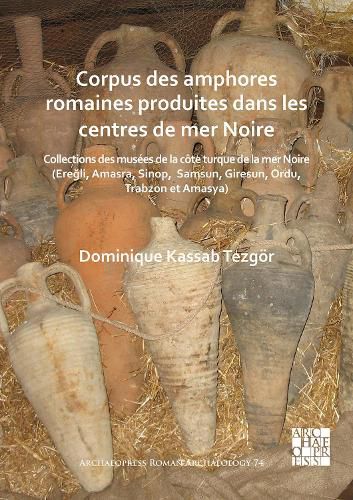Readings Newsletter
Become a Readings Member to make your shopping experience even easier.
Sign in or sign up for free!
You’re not far away from qualifying for FREE standard shipping within Australia
You’ve qualified for FREE standard shipping within Australia
The cart is loading…






The Black Sea cities of Turkey’s northern coast - Eregli , Amasra, Sinop, Samsun, Giresun, Ordu, Trabzon, and inland Amasya - are endowed with museums whose holdings include important collections of amphorae. Their state of preservation is also exceptional since the majority were recovered intact from the sea. Most were produced in the big manufacturing centres around the Black Sea during the Roman period, between the 2nd/3rd centuries BCE and the 7th century CE. This Corpus brings them together and analyses them in the light of recent investigations. The production lines of Sinop and Colchis are especially well represented and can be followed without interruption over several centuries. The size of the assemblage - ca. 450 vessels - provides an overview of manufacturing trends for Black Sea amphorae, and brings out the similarities and differences in technique and morphology that distinguished one workshop from another. Research on this corpus has also offered an opportunity to consider questions inherent to amphora studies, such as what commercial goods they contained; how vessel shapes related to the regional resources for which they were designed; standardized volumes; and the use of amphoras in paying the annona.
$9.00 standard shipping within Australia
FREE standard shipping within Australia for orders over $100.00
Express & International shipping calculated at checkout
The Black Sea cities of Turkey’s northern coast - Eregli , Amasra, Sinop, Samsun, Giresun, Ordu, Trabzon, and inland Amasya - are endowed with museums whose holdings include important collections of amphorae. Their state of preservation is also exceptional since the majority were recovered intact from the sea. Most were produced in the big manufacturing centres around the Black Sea during the Roman period, between the 2nd/3rd centuries BCE and the 7th century CE. This Corpus brings them together and analyses them in the light of recent investigations. The production lines of Sinop and Colchis are especially well represented and can be followed without interruption over several centuries. The size of the assemblage - ca. 450 vessels - provides an overview of manufacturing trends for Black Sea amphorae, and brings out the similarities and differences in technique and morphology that distinguished one workshop from another. Research on this corpus has also offered an opportunity to consider questions inherent to amphora studies, such as what commercial goods they contained; how vessel shapes related to the regional resources for which they were designed; standardized volumes; and the use of amphoras in paying the annona.